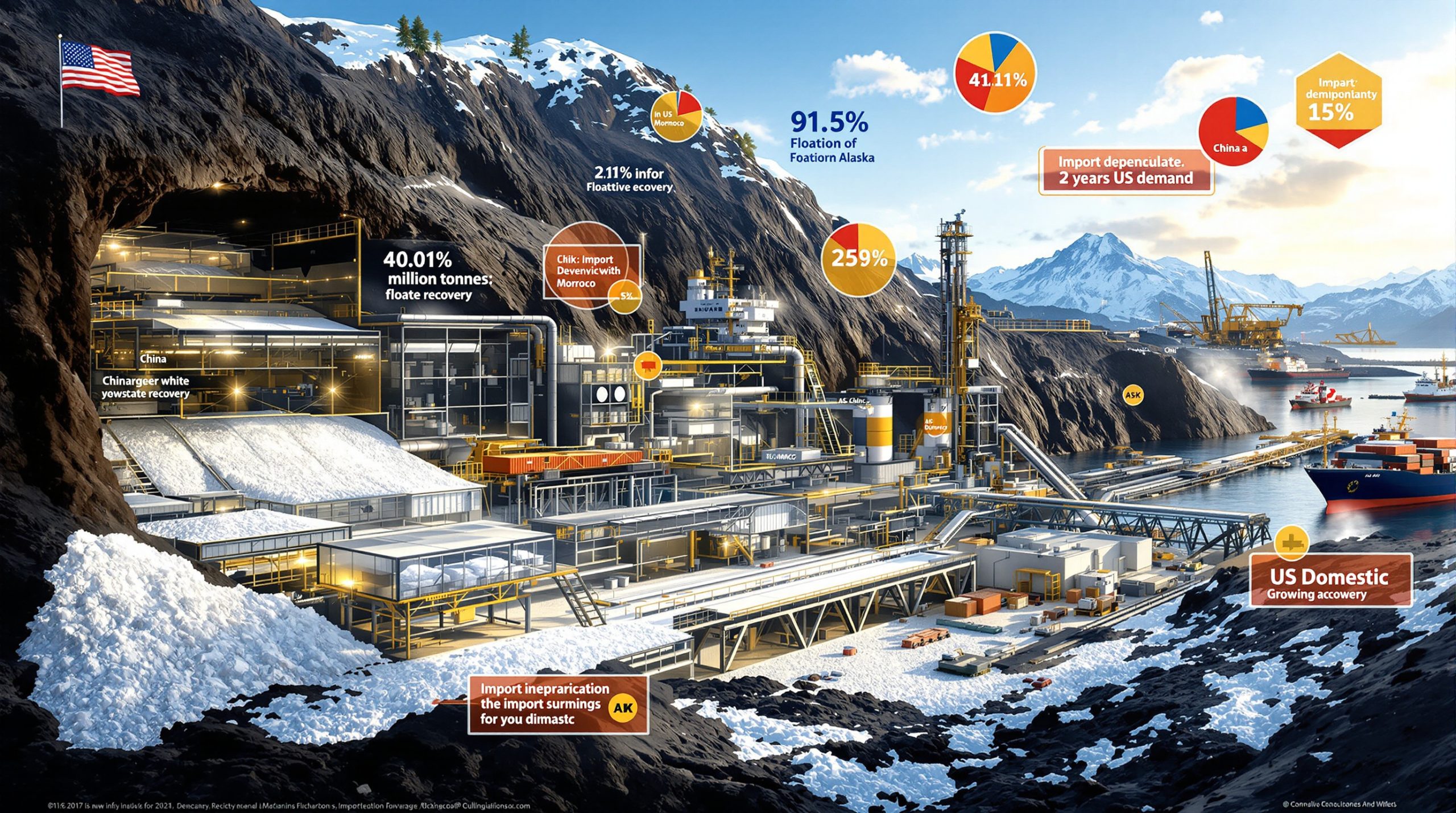The global copper shortage is reshaping the financial, industrial, and geopolitical landscape as demand from electrification and technological advancement accelerates far faster than supply growth. As clean energy initiatives, electric vehicles (EVs), and digitisation scale up, copper price predictions show refined copper demand could soar from approximately 27 million tonnes in 2024 to as much as 50 million tonnes by 2035. According to the International Energy Agency and S&P Global, such growth signals a dramatic, structural mismatch that may upend multiple sectors and trigger widespread economic consequences.
Copper's unique conductivity and durability make it irreplaceable in power systems, renewable energy, and advanced electronics. As climate-focused policies intensify worldwide, copper's critical role elevates it from a simple commodity to a foundation of the modern transition economy. The World Bank forecasts that mineral output, with copper at its core, must surge nearly 500% by 2050 to meet ambitious climate goals. Investors should view the global copper shortage not as a fleeting price cycle, but as a generational shift in how economies are built and powered.
How Severe is the Current Copper Supply Deficit?
Quantifying the Shortage Timeline
The supply deficit is significant and intensifying. The International Copper Study Group reported a global deficit of over 430,000 tonnes in 2023. Furthermore, the global copper supply forecast reveals a concerning trend. The below table summarises projected supply-demand gaps over the coming decades:
| Year | Projected Demand (Mt) | Expected Supply (Mt) | Deficit (Mt) | Deficit Percentage |
|---|---|---|---|---|
| 2025 | 28.5 | 27.8 | 0.7 | 2.5% |
| 2030 | 31.2 | 29.1 | 2.1 | 6.7% |
| 2035 | 37.0 | 25.9 | 11.1 | 30.0% |
| 2050 | 42.8 | 24.2 | 18.6 | 43.5% |
These figures reflect a steep, accelerating shortage—by 2035, nearly a third of forecasted demand may go unmet.
Critical Supply Bottlenecks
The copper industry faces daunting bottlenecks:
- Ore grades have declined from over 1% in 1900 to roughly 0.5% today, doubling the amount of ore needed per tonne of copper.
- Mining projects approved in recent years are insufficient; no major new copper mines were greenlit in 2023.
- Existing mines face exhaustion, deteriorating quality, and increased production costs due to complex geology and depleted resources.
- Time from discovery to full production can exceed 16-20 years, outpacing technological and demand trends.
Key Insight: The shortage is not a typical commodity cycle, but stems from a fundamental disconnect between modern technological needs and an aging, underinvested supply base.
Which Industries Drive the Copper Demand Explosion?
Electrification as the Primary Catalyst
The surge in copper demand is powered by transformative trends, with electrifying copper demand becoming a critical factor:
-
Electric Vehicles (EVs):
- Traditional vehicles use roughly 25-50 kg of copper.
- Battery electric vehicles require 80-185 kg per car—triple to quadruple the amount.
- Global EV sales are projected to hit 30 million units per year by 2030.
-
Renewable Energy Infrastructure:
- Offshore wind turbines use 15 tonnes per MW; onshore units around 3-5 tonnes.
- Solar installations demand 4-5.5 tonnes per MW.
- Electricity grids require massive upgrades, adding up to 80 million kilometres by 2040, most of which relies on copper transmission and distribution.
-
Digital and AI Infrastructure:
- Data centres require 3-5x more copper than traditional buildings, up to 70 kg per square metre.
- 5G and AI data centres demand specialised high-conductivity copper components.
Regional Demand Patterns
- China is responsible for roughly 54-55% of global copper usage, maintaining its dominance in manufacturing and infrastructure development, despite slowing growth rates.
- United States copper imports surged—some sources indicate over 100% growth year-on-year through 2025—driven by legislative spending on infrastructure and expectations of future tariffs or supply restrictions.
- Europe and South Korea are expanding investments in green energy and technology upgrades, intensifying global competition for copper resources.
What Operational Challenges Plague Copper Mining?
Project Development Constraints
Copper mining is delayed by numerous hurdles:
- Discovery to production can take 5-30 years, with U.S. permitting alone averaging 7-10 years.
- Global capital expenditure of $150-250 billion is required by 2030, yet chronic underinvestment persists.
- Environmental regulations, water scarcity, and local resistance affect more than 25% of known reserves, leading to extended legal battles and social licence challenges.
Recent Operational Disruptions
Disruptions in 2024-2025 have exacerbated shortages:
- A mudslide at Indonesia's Grasberg mine (September 2025) cut output, disrupting major global supply contracts.
- Codelco's El Teniente mine in Chile halted some operations after a fatal tunnel collapse in July 2025, creating additional supply shock.
- Widespread labour unrest and protest in Peru have delayed several copper mining projects this year.
These challenges, alongside declining ore quality, amplify the market's underlying tightness and contribute to extreme price volatility.
How Are Geopolitical Tensions Worsening the Shortage?
US-China Trade Relations Impact
Rising political friction between major economies threatens copper's global value chain:
- Difficulty in procuring mining equipment due to extended lead times and increased costs—a direct effect of restricted international trade.
- New U.S. import tariffs and Chinese export controls on critical rare earth elements have fragmented supply, increased uncertainty, and driven up procurement expenses by 15-25%.
- These disruptions have elongated mine development timelines by 6-18 months in some cases.
Industry leaders warn that the world copper market is being fragmented, driving competition instead of collaboration and slowing innovation in extraction technology and infrastructure expansion.
Strategic Resource Competition
Resource nationalism is on the rise:
- Countries are securing domestic copper supply chains, restricting exports, and prioritising local industries.
- This trend erodes global supply chain efficiency and increases geopolitical risk for miners and manufacturers alike.
- The concentration of copper reserves in regions with elevated political risk (Chile, Peru, Democratic Republic of Congo) introduces additional uncertainty for investors and end-users.
What Price Movements Reflect the Shortage Severity?
Historical Price Context
Copper's price trajectory signals intense supply stress:
- October 2025: Copper prices approached historic highs, surpassing $11,000 per tonne—a nearly 180% increase from pandemic lows in 2020 (~$4,600/tonne).
- 2023-2024: LME copper prices averaged $8,500–$9,000 per tonne, with sharp rallies following major supply disruptions (such as the Grasberg mudslide).
- Projections: Market analysts forecast surges beyond $12,000 per tonne in early 2026 as demand continues to outstrip supply.
Table: Copper Price Scenarios and Economic Impact
| Price Level ($/tonne) | Scenario | Economic Implications |
|---|---|---|
| $8,000–9,000 | Baseline | Manageable inflation pressures |
| $10,000–11,000 | Shortage Premium | Significant cost increases for manufacturers |
| $12,000–15,000 | Crisis Level | Project delays, accelerating material substitution |
| $15,000+ | Supply Emergency | Economic disruption, industrial policy interventions |
Price Volatility Factors
- Spot market tightness and regional inventory imbalances
- Advance purchasing to avoid future tariffs or trade barriers
- Speculation based on persistent shortage expectations
- Currency swings impacting international copper trade flows
Investors should recognise that current copper price dynamics are driven by physical market realities, not merely financial speculation.
Which Solutions Could Address the Copper Crisis?
Technology and Innovation Pathways
Potential relief strategies include:
-
Enhanced Recycling: Boosting recycling rates from 35% up to 60-70% could supplement supply, with electronics recycling alone potentially adding 2-3 million tonnes per year by 2030. Copper is one of the few metals that can be almost entirely recycled without loss of quality, but collection logistics and system capacity remain hurdles.
-
Mining Efficiency: New technologies—autonomous equipment, advanced ore sorting, geophysical exploration, and more efficient extraction—could lower costs and tap previously inaccessible reserves. These improvements may raise average recovery rates and unlock lower-grade deposits profitably.
-
Breakthrough Technologies: Investment in breakthrough companies is accelerating, exemplified by Codelco's partnership with I-Pulse, which aims to deploy pulsed-power technology for better mineral recovery and lower environmental impact.
Alternative Supply Strategies
- Deep Ocean Mining: Seafloor copper nodules offer promising potential, possibly supplying 10-15% of future needs, but legal, technological, and environmental obstacles are formidable.
- Urban Mining: Extracting copper from retired infrastructure, especially in developed economies, could relieve some pressure, particularly as aging power grids and electronics become scrap sources.
While recycling is pivotal, even an aggressive ramp up is unlikely to fill more than 30-40% of new demand—primary mining and technological innovation remain essential.
How Will the Shortage Affect Global Economic Sectors?
Manufacturing and Construction Impact
Copper-intensive industries are facing escalating costs and supply interruptions:
- Construction may encounter project delays and price inflation.
- Electronics manufacturers are revisiting designs to use less copper or substitute alternative materials, compressing margins and increasing engineering risk.
- Automakers could experience production bottlenecks or reduced profitability in EV product lines.
Energy Transition Implications
The global copper shortage threatens to slow the climate transition:
- Electric grid and renewable energy expansion may lag, increasing the risk of missed climate targets.
- EV adoption and energy storage deployment could falter, with projected delays of 5-10 years for decarbonisation milestones if copper prices remain high.
Critical infrastructure risk factors:
- Delays in grid upgrades and modernisation
- Lower rates of clean transport adoption
- Potential deferment or cancellation of renewable energy projects
- Slower rollout of industrial automation
These challenges underline copper's role as a lynchpin for both economic growth and climate policy execution.
What Investment Opportunities Emerge from Copper Scarcity?
Direct Mining Exposure
Investors may consider:
- Leading producers such as BHP, Rio Tinto, and Freeport-McMoRan, benefiting from higher prices but exposed to operational, jurisdictional, and ESG risks.
- Smaller, growth-oriented miners with high-grade or low-cost assets, which may offer leveraged returns—but with greater risk from project delays or market volatility.
The importance of gold & copper exploration cannot be overstated in this context, as new discoveries become increasingly critical.
Technology and Efficiency Themes
- Companies developing advanced recycling systems, AI-powered ore processing, autonomous mining equipment, or breakthrough extraction technologies may outperform as these innovations become critical.
- Industrial suppliers helping manufacturers and utilities adapt to copper scarcity—by improving efficiency, optimising material use, or developing substitutes.
Investment Market Dynamics
- Market psychology is shifting from tactical trading to long-term positioning as supply deficits are expected to persist through the 2030s.
- Investors should monitor project pipelines, geopolitical risk, and technology adoption, in addition to traditional supply-demand balances.
Furthermore, us copper investment insight suggests that regional investment patterns are becoming increasingly important in this evolving market.
Disclaimer: This information should not be construed as financial advice. Commodity prices are volatile and affected by unpredictable geopolitical, technological, and environmental factors. Professional consultation is recommended before making investment decisions.
FAQ: Understanding the Global Copper Shortage
Q: When will the copper shortage begin affecting consumers directly?
A: Consumers are already noticing higher costs for vehicles, electronics, and building materials. If shortages continue, actual supply disruptions may be felt by 2026-2027.
Q: Can recycling solve the copper shortage problem?
A: Recycling is crucial but insufficient alone. It can offset perhaps 30-40% of new demand by 2035, with the remainder dependent on supply expansion and efficiency gains.
Q: Which countries have the largest untapped copper reserves?
A: Chile, Peru, and the Democratic Republic of Congo possess the largest identified reserves. However, political uncertainty, logistical constraints, and social opposition hinder rapid development. Industry experts warn that copper supply shocks could intensify if these challenges persist.
Q: How long might the copper shortage last?
A: Most consensus predictions suggest structural deficits could remain through the 2030s, especially acute between 2026 and 2032 under current trajectories.
Further Exploration: For deeper insights, readers should consult industry analyses from reputable mining publications, international commodity organisations, and scientific studies for ongoing updates on the global copper shortage.
Exploring Copper Investment Opportunities in Australia?
Discovery Alert's proprietary Discovery IQ model delivers real-time alerts on significant copper discoveries across the ASX, instantly empowering subscribers to identify actionable opportunities ahead of the broader market. With copper shortages intensifying and demand surging from electrification trends, position yourself at the forefront of Australia's next major copper discovery and begin your 30-day free trial today to secure your market-leading advantage.




